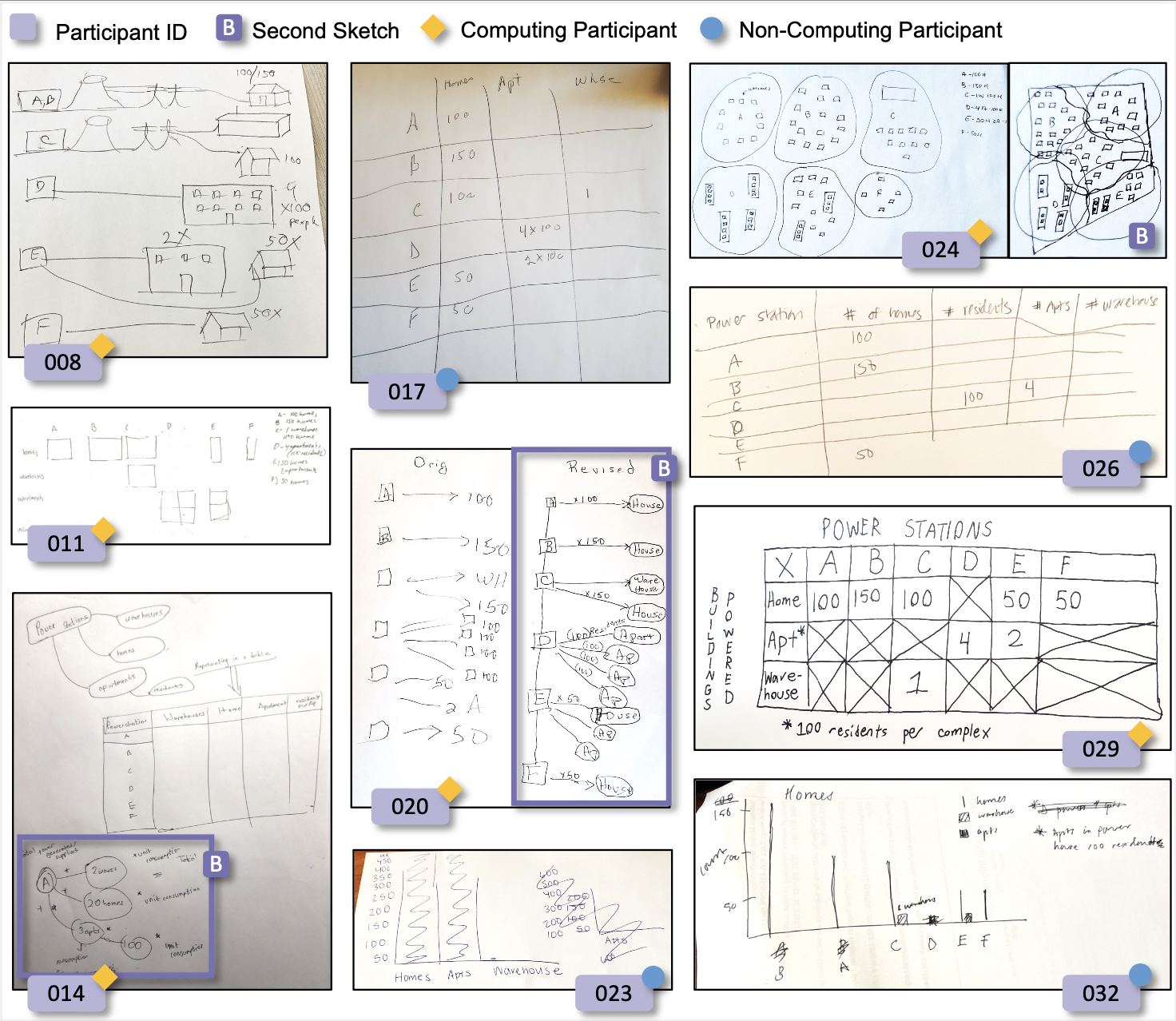How do you think about data? When looking at a dataset, how do you envision the data? What similarities and differences do we have in our mental models of the same dataset?
We presented participants with one of three datasets in paragraph form, rather than tabular form, and asked them to draw their mental model of the data. We saw a diversity of data representations and data abstractions, even from participants who had the same dataset. The resulting sketches and interview transcripts can be found in our osf repository.

Abstract: Two people looking at the same dataset will create different mental models, prioritize different attributes, and connect with different visualizations. We seek to understand the space of data abstractions associated with mental models and how well people communicate their mental models when sketching. Data abstractions have a profound influence on the visualization design, yet it’s unclear how universal they may be when not initially influenced by a representation. We conducted a study about how people create their mental models from a dataset. Rather than presenting tabular data, we presented each participant with one of three datasets in paragraph form, to avoid biasing the data abstraction and mental model. We observed various mental models, data abstractions, and depictions from the same dataset, and how these concepts are influenced by communication and purpose-seeking. Our results have implications for visualization design, especially during the discovery and data collection phase.
Paper
Katy Williams, Alex Bigelow, and Katherine E. Isaacs. 2023. Data Abstraction Elephants: The Initial Diversity of Data Representations and Mental Models. In Proceedings of the 2023 CHI Conference on Human Factors in Computing Systems (CHI ‘23). Association for Computing Machinery, New York, NY, USA, Article 803, 1–24. https://doi.org/10.1145/3544548.3580669
- Paper talk [9:29]
- Supplemental material README.PDF
- codes.md (redacted and highlighted PDF)
- Google Jamboard (PDF)
- OSF repository of interviews and sketches
- Video preview [0:29]